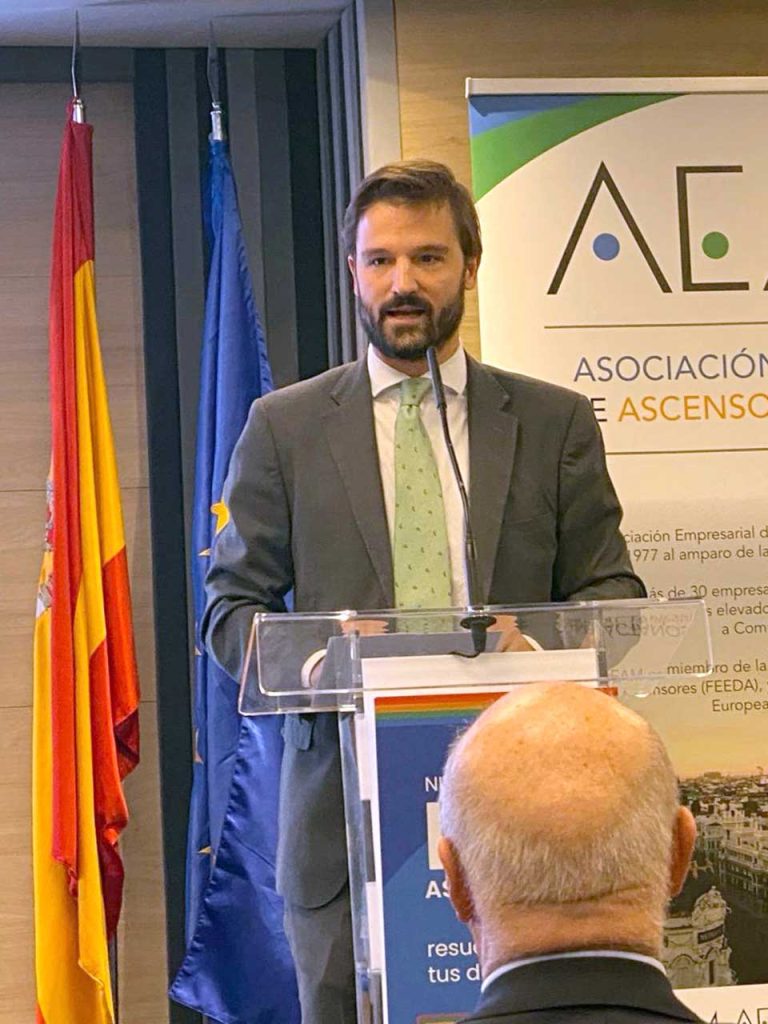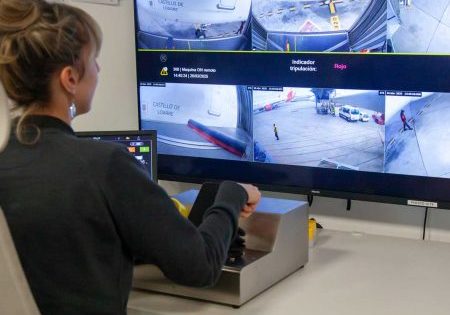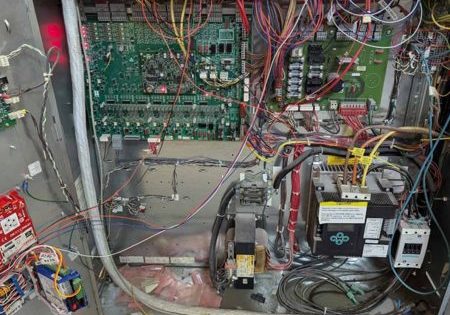Madrid Conference Overview
Jun 5, 2025
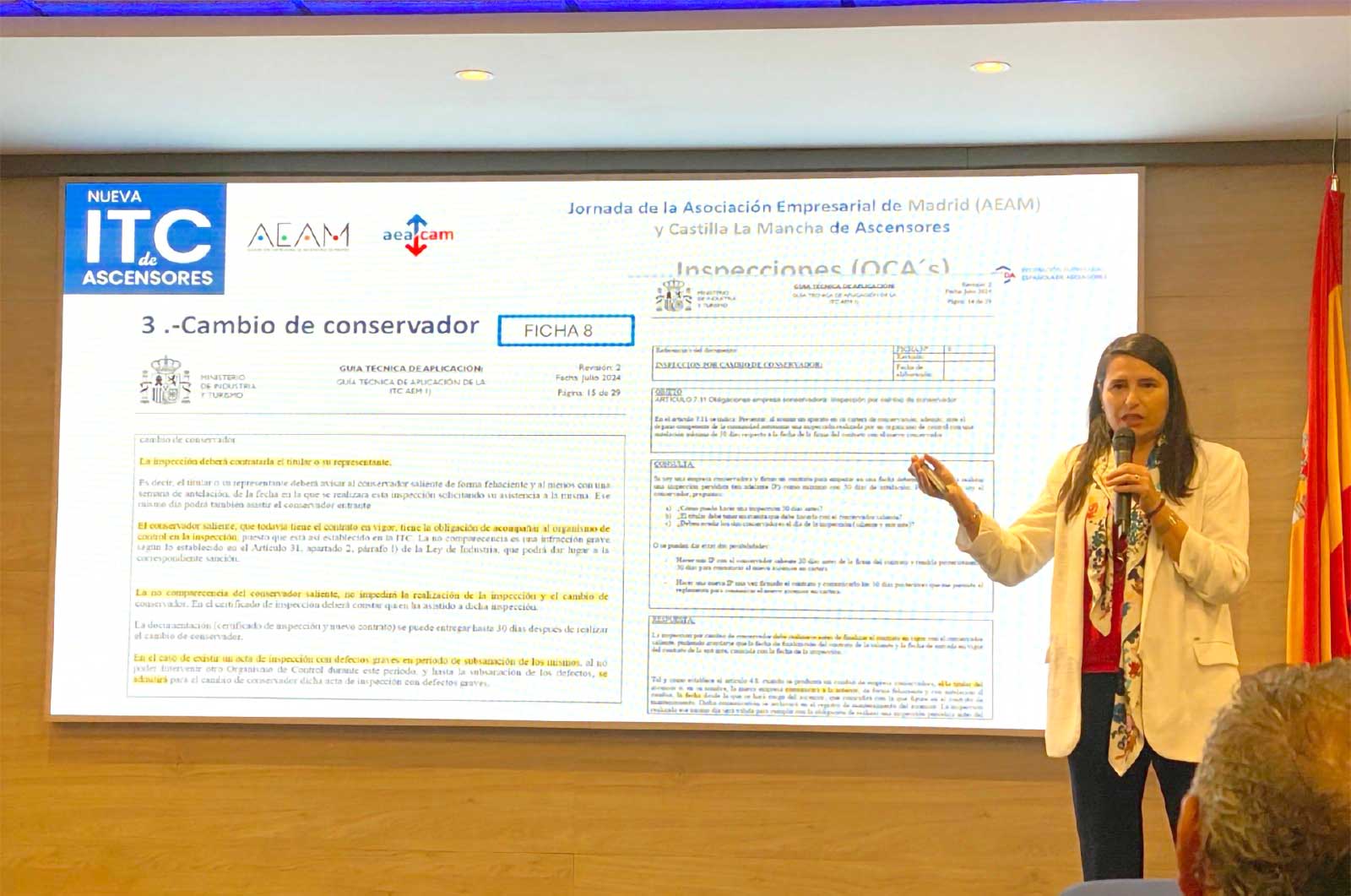
A review of the interpretation of the ITC in Spain
The new update to the Complementary Technical Instruction (ITC) continues to raise many questions and interpretations among industrial professionals in Spain. The regulations are seemingly complex due to the details but contain new features that still deserve clarification for improved operational effectiveness. This was the backdrop for a technical conference held in Madrid in October, organized by the Madrid Elevator Business Association (AEAM) in collaboration with the Castilla-La Mancha Elevator Business Association (AEACAM), at the headquarters of the Official College of Technical Industrial Engineers of Madrid (COGITIM).
The event was presented by José Antonio Galdón, dean of COGITIM, and brought together experts from the Public Administration, representatives of the Authorized Control Bodies (OCAS) and CafMadrid (Professional Association of Property Administrators of Madrid), as well as companies in the vertical-transportation (VT) sector to discuss key aspects of the regulations that came into force on July 1, 2024.
The opening ceremony was led by Jaime Martínez Muñoz, director General of Economic and Industrial Promotion for the Comunidad de Madrid (CAM), who highlighted Spain’s importance in the lifting market and Madrid, where 180,000 devices are registered. Martínez said:
“All the improvements made to these facilities to increase industrial safety levels are vitally important, and this is compatible with energy efficiency. This sector is undergoing a very active transformation, so we must commit to making it safer, faster, more efficient and more accessible.”
He also noted that the experience gained by administrations, companies, owners and control mechanisms, along with the 2013 regulations, as well as the corresponding European directive, new UNE standards regarding inspection and maintenance and other factors, are “what motivated the creation of this new ITC, which seeks the greatest possible safety.” He explained that the ITC seeks “greater transparency for owners and the ability to access all the information on each elevator because, ultimately, each unit tells its own story.”
Among the most notable changes in this ITC, Martínez highlighted the increased safety in all existing elevators, an increase justified to prevent leveling accidents, door closures, uncontrolled upward movements, load control devices, etc. He noted:
“A key element is two-way communication so that people trapped in an elevator can call for help. Here, the CAM understood in 2005 that it was essential that the incorporation of these communication elements be compatible with the rest of the equipment to expedite rescue assistance.”
He thus acknowledged before the audience “the commotion among the autonomous communities” caused by the initial inspection that must be performed on equipment before it is released to the market, according to the new ITC, which requires the approval of specific procedures to detect manufacturing defects: “In Germany, this initial inspection is already incorporated, and we hope that it will now be implemented in Spain in order to apply best practices.”
Martínez highlighted the collaboration of industry associations in implementing the new regulations and urged continued perseverance in this information transition because “we need this interaction. This is our goal. A tremendous amount of work is being done to adapt as best as possible.”
Review of Regulatory Inspections
To clarify issues regarding equipment inspections, Anabel Rodríguez, a member of the Spanish Elevator Business Federation’s (FEEDA’s) Standards and Legislation Committee, spoke. One of the most common concerns centers on when receiving an unfavorable diagnosis following a second inspection in which the elevator was shut down and inspected before it could begin operating again. She asked: “What is the application deadline? Can it be put back into service once the cause that led to the shutdown is eliminated, or does the report have to be completely clean?”
Rodríguez reported that, according to the Ministry:
“If there were serious defects in the original inspection, the resolution deadline remains the same, regardless of whether the very serious defects are resolved. This inspection does not gain any time to resolve serious defects. These are obstacles that, in practice, we weren’t clear on how to proceed.”
Another dubious circumstance centers on the elevator inspection’s catch-all diagnostic label, when it is neither green (favorable) nor red (unfavorable). This includes classifications such as favorable with minor defects, repeated minor defects, unfavorable with serious defects and even the connotation of being conditional on appearing on the label and reflecting the conditional on having a green sticker classification. Rodríguez asked the audience: “Whenever they put a yellow sticker on us, will the OCA come to verify that the minor and/or repeated minor defect has been resolved in order to change the sticker?” She responded:
“The idea is that there will be a notification; a visit is not planned, but a validated procedure is to send a correction certificate and then send us the green sticker. Thus, the person in charge will have to post it in the elevator cabin so that the user knows that the defects in their elevator have been corrected.”
Rodríguez referred to one of the main new features of this ITC: the implementation of the initial inspection. This had an impact on the sector due to the revisions of cabin systems, ISO 9001 certification and self-certification processes. “Initially, the additional pre-marketing inspection was confusing, but its objective of preventing factory defects has been understood,” she said.
Initially, the inspection certificate was valid for only one month, which hampered the logistics of delivery and installation. However, after recognizing this problem, the Administration extended the deadline to three months in the final text of the regulations. Rodríguez noted:
“Although the initial inspection represents an additional process, its impact should not be significant. The adaptation was complex due to the lack of preparation of the official mechanisms and the accreditation of the certifiers, but the process has become clearer, especially with the elevator registration in July.”
She also referred to the expired inspections that, by administrative mandate, left the elevator out of service. The new development is that “this ITC mandate is especially sensitive because we are the ones who have to leave the customer who is paying us for the contracted services without service.” Rodríguez alluded to the initial chaos when some equipment was shut down due to a decree that came into effect, amid many doubts. However, the Ministry of Industry extended the transit time so, as of October 1, 2024, any installation with an expired inspection will be shut down.
Another new development is that the periodic inspection cannot be contracted by the maintenance company. Rodríguez stated that this issue has been the subject of clarification between the ministry and the regional governments:
“We don’t quite understand why the problem arises with the contracts with the public administration, which include clauses in their current contracts that include management of the OCA. Before the ITC was approved (July 1), this wasn’t prohibited; those contracts were legal, and they stipulated that the conservation company would be responsible for managing the contract. We don’t understand why this measure applies to public contracts and not to current private contracts. The contracts are being updated; we’ll have to see if these clauses in the contracts with the administration are eliminated, which would be desirable.”
Regarding conflicts due to lack of documentation prior to inspection, especially in serious cases, Rodríguez said:
“There are certified entities that understand that if a document is missing, the inspection will not be performed. That is not the spirit of the ITC. We would appreciate some insight into this issue, which can become a very serious loop of defects, resulting in elevators being paralyzed due to the lack of a document.”
Inspections due to changes in maintenance were also clarified for attendees, as they were unaware of how to proceed, when to intervene, within what timeframes, etc. When asked about the need for an inspection certificate, Rodríguez commented that “it would be one month old before the new maintenance company begins operating this elevator;” although the text of the ITC does not clarify whether the time limit should run out until one maintenance company finishes and another begins, and then there are 30 days, or it should be before the 30th of the current month. Rodríguez said:
“According to the OCA, there were different positions on this matter, and at FEEDA, we understood that the change should be made sooner, regardless of what was regulated in other autonomous communities and how it had been carried out up to that point.”
Regarding accident inspections, Rodríguez emphasized that it remains a key aspect, although it is not always “clear whether it is mandatory in all cases.” Currently, after an incident, the elevator is taken out of service and communication from the administration is awaited, but “it would be good to know the necessary criteria to expedite the process,” she stated.
In this regard, Rodríguez noted that the Administration has clarified that “it is not mandatory to have an injury report” to disable an elevator. Regarding the Increased Safety in Existing Elevators (ISAE) measures, although they are linked to periodic inspections, “current resources and mechanisms are insufficient to guarantee compliance with deadlines,” she emphasized, arguing that one problem is that “the warning to the owner about pending issues is included as an annex to the inspection report, with no link to additional visits or the inspection rating.” Therefore, Rodríguez proposed a “yellow label” with the deadline as a solution, which does not imply an unfavorable inspection. Thus, she concluded that in the absence of a link to the OCA report, “the owner is unaware of their obligations, which leaves the maintenance staff defenseless.” Rodríguez added that some regions, such as the Basque Country, are moving forward with electronic notifications, but “it is unknown whether Madrid or Castilla-La Mancha will adopt similar initiatives.”
Belén Benito, deputy director general of Economic and Industrial Promotion, responded to this observation by stating that her department was managing the computer system so that the OCA inspection certificate would include the defects in the annex, along with the measures to be implemented in each elevator listed in Annex 7, as well as their deadlines:
“This action will allow us to monitor the situation. The certificate will include the measures to be implemented, the deadlines, as well as those that are the cause of some type of accident in our decision to intervene in the elevator. The owner will be aware of this, so I see no need for a sticker.”
Regarding the change of maintenance, Benito clarified that the inspection must be notified one week in advance. And regarding the question of whether the deregistration is communicated and the request is not granted, she emphasized that the new ITC imposes “more responsibilities on all parties, including the owner, who will have greater transparency regarding their elevator, but also more obligations.” Benito also pointed out that the inspection for a change of maintenance contractor aims to verify that the previous maintenance contractor was acting correctly and that, if there were problems, they should be analyzed on a case-by-case basis before taking action.
Maintenance Obligations for the Owner and the Maintenance Contractor
Andrés Táboas, a member of the FEEDA Standards and Legislation Committee, explained the new requirements imposed by the new ITC on how to approach maintenance. He thus expressed doubts about “the elimination of the position of the external elevator supervisor, since with the new communicators connected to a rescue center, trained personnel in the building would not be necessary.” However, Táboas warned about the risks of outsiders performing rescues in elevators and raised “the need” for maintenance companies to review this aspect.
Regarding the owner’s obligations, he acknowledged that it is “the duty of all maintenance companies to explain their obligations to the owner. Most of us have failed here because we have sometimes assumed functions that were the owner’s.” He explained that among these obligations, one of them includes the owner having the documentation for their elevator and that the maintenance company can offer assistance; the owner must hire an accredited company that is validated to perform maintenance; the owner decommissions the elevator if they consider the equipment to be at risk and must then notify the maintenance company. Táboas emphasized the importance of this last obligation because “it seems like we are aware of it two months later, especially since we have to meet our obligations if the owner meets theirs.”
Regarding the documentation for each piece of equipment, this FEEDA member pointed out that the Administration receives a copy of this information, but:
“When a document is missing, it is officially requested, which is not easy. There are many elevators for which no documentation can be found, and some autonomous regions have completely replaced the elevator due to the lack of documentation due to the risk involved.”
For this reason, this expert emphasized the need to update all elevator documentation, and in the event of a change of caretaker, it is the owner of the elevator that provides said documentation. To proceed with the change of caretaker, Táboas pointed out:
“A periodic inspection must be carried out in advance. Although it is stated that the inspection can be done on the same day as the caretaker, and even if the arrival and departure dates coincide, this does not seem appropriate to me due to the liability and insurance coverage issues it entails. It is also not correct to say that the equipment inspection will be carried out even if the outgoing caretaker is not there. Who will be in charge of the OCA? The incoming caretaker? The ITC states that it must be the outgoing caretaker. This issue should be reviewed.”
Regarding the caretaker’s obligations, Táboas pointed to accreditation and the availability of qualified and accredited personnel in the operation of the elevator. He commented that the ITC specifies the requirement of a caretaker and a qualified technician hired part-time, “which has caused a controversy over resources from small and medium-sized enterprises.” A draft decree was created requesting that the maintenance contractor be able to assume both roles, but it was rejected.
The new regulations regarding the ITC establish that elevator maintenance companies must implement a detailed maintenance plan, defining the specific actions for each piece of equipment. This plan must indicate the estimated time of each intervention and the assigned personnel. In addition, on-site preventive maintenance inspections are regulated, establishing a frequency of four months for single-family elevators or those with up to three stops in buildings with fewer than 20 units, while all other equipment must undergo monthly inspections.
This FEEDA expert referred to the maintenance test and the types of checks, noting that according to the ITC, they are
“Minimal, but they must be performed. To these must be added those that the manufacturer may define or those that may be defined as additional, either because important checks have been performed or components that were not originally present have been introduced and require other maintenance measures, or due to the equipment’s specific characteristics.”
To ensure compliance with these inspections, no less than 20 days and no more than 45 days can elapse between two consecutive visits, which requires precise planning of maintenance routes. Although technology allows for remote monitoring and diagnosis, regulations maintain the requirement for on-site supervision.
Táboas highlighted the significant requirement to record all interventions on a computer and deliver a report within a maximum of 10 days, including details of the elevator, the company and the repairs performed. To streamline the process, the use of digital tools is permitted, provided communication with the customer is secure and verifiable. “Conservation companies are also required to report accidents or damage to the authorities and to take elevators that fail an inspection out of service until the incident is resolved,” he said.
Regarding the Elevator Operating Manual, this expert in regulations and legislation emphasized that, according to the seventh additional provision and Annex VIII, which establishes instructions for the safe use of the elevator, if this manual is not available, the maintenance company will be required to prepare it within a maximum of two years from the entry into force of the ITC, that is, before July 1, 2026. This affects elevators that predate the European Directive, which predates July 1999. Táboas said:
“Conservation companies are not manufacturers and installers, and we do not have that responsibility for the product. Therefore, can we prepare a manual? We will do our best, but we do not have all the design criteria that the installer and manufacturer have.”
He also raised the case of equipment that, because it is maintained by different companies, may require several operating manuals. “This raises questions about how maintenance personnel will be handled when changes occur and about which manual should be used,” noted Táboas, who advocated establishing minimum maintenance instructions because the same requirements cannot be imposed on a new elevator as on an existing one.
José Manuel Rodríguez, the president of AEAM, raised the possibility of having a single archive of the entire elevator fleet in the CAM, safeguarded by the Administration. This idea was launched by CafMadrid and also supported by the Association of Inspection Entities of the Community of Madrid (ASEICAM). Rodríguez stated:
“It could be a very valuable and interesting project for all stakeholders in this market. You have our support to work on this. From the elevator operator’s perspective, it makes no sense to have to request the necessary documentation from different entities if the elevator is younger.”
Benito responded that such a project would be “good to be implemented,” but the organization of elevator documentation is managed in accordance with the Administrative Procedure Law. “The oldest files are in the regional archive, where they are being digitized with the available resources. And we are also implementing it. That’s our intention,” Benito said.
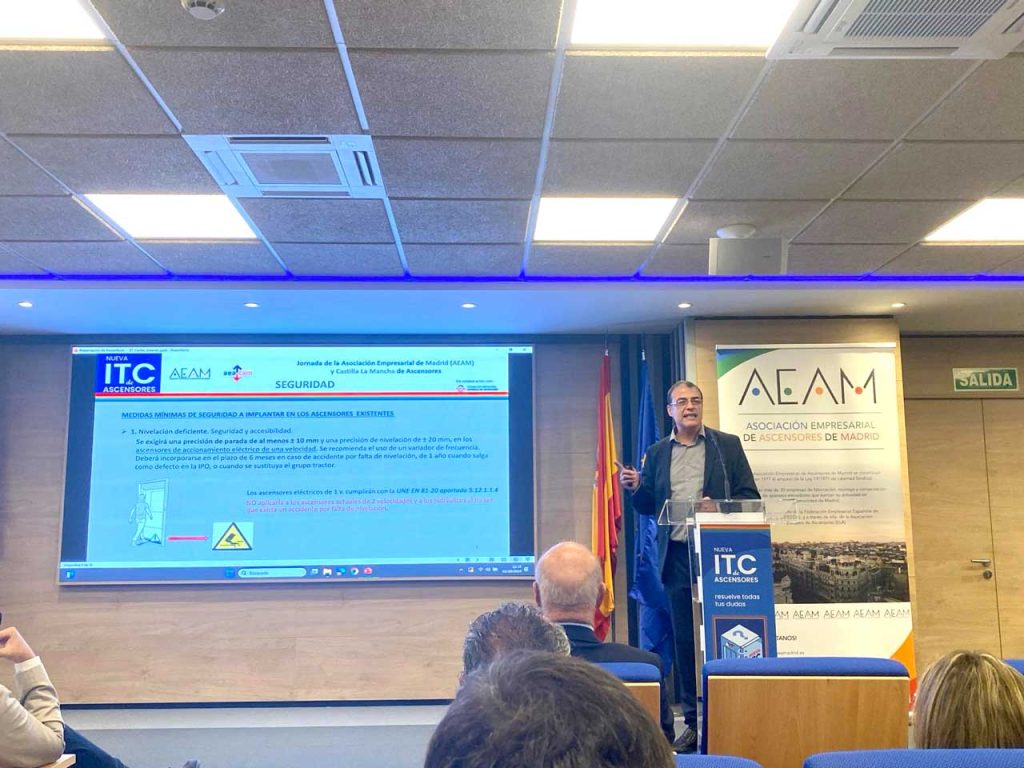
ISAE
Carlos Jiménez, a member of the FEEDA Standards and Legislation Committee, addressed Annex VII of the ITC, known as ISAE, which details safety measures aimed at improving the conditions of existing elevators. He explained that, according to the ITC, the ISAE does not apply to elevators that comply with the Machinery Directive 2006/42/EC and the Lift Directive 2014/33/EU. However, he pointed out a discrepancy:
“Royal Decree 57/2013 stated that elevators that reached two floors must be legalized and adapted to the Machinery Directive, but now, according to the ITC, if a platform lift has a travel of 3 m, it must also be legalized.”
Jiménez emphasized that this will affect many elevators, “since, even if they don’t reach two floors, if they have a travel distance of 3 m, the ISAE will apply to them.” He clarified that, according to Annex VII of the regulations, “it does not apply to elevators that comply with the Machinery Directive or Directive 2014/33/EU, but it does apply to other types of elevators, such as platform lifts.” This is something that, in his opinion, “needs to be clarified.” Finally, he commented on the necessary modifications, stating that the ITC indicates that major modifications will be made under “the restrictions of the Machinery Directive or the EN 81-20/50 standard, and all must be aligned with current directives.”
Regarding the safety measure related to poor leveling, he commented that the stopping precision requirement is one centimeter, but “it would only affect single-speed elevators, with a one-year deadline for applying that exact measure. And what happens in the event of an accident?” Jiménez asked, responding that the deadline will be six months:
“What if the accident occurs in a two-speed machine or a hydraulic elevator? I don’t know, but I suppose we’ll have to resolve it within six months and inform the competent authority, indicating that the maneuver involved two speeds and that it was poorly leveled.”
Regarding the doors closing, Jiménez reported on the inclusion of pets; he also referred to the incorporation of additional measures against uncontrolled movements, such as uncontrolled upward movements of the car (overspeed) and uncontrolled movements with the car at rest and the doors open (amendment A3-UCM).
Regarding the question of whether a protection against closing doors must be installed in all elevators with automatic doors, point 2 of Annex VII indicates that all elevators with automatically operated doors must incorporate a protection device, and the reference standard UNE EN 81-20, section 5.3.6.2.2.1.b), indicates that the protection device must automatically control the reopening of the door. However, Jiménez noted that, at FEEDA, “We have always interpreted that this measure is not necessary in facilities with manual/semi-automatic exterior doors unless they have their own motorization to make them automatically operated.”
He also pointed out that point 2 refers to all automatic control doors, but “does not specify whether they are exterior or cabin automatic doors. There are many doubts in this regard because each OCA is adopting different measures.”
Benito indicated in this regard that, while a package of equivalent alternative security measures was approved to address the inspection defects that occurred massively in the equipment at the time, from now on:
“An equivalent security solution will be developed to be presented to the subgroup of regional governments in the Market Unity Group, and thus to all the autonomous regions. It will be presented through the ministry to be included in the Technical Guide for the Application of ITC AEM 1 of the Ministry of Industry.”
Both Benito and Eugenia Fernández, head of the Security Installations Service of the CAM, were willing to answer any questions about the equipment files and stressed the importance of accessing digital resources to assist in interpreting the regulations. Henar Gozalo, president of AEACAM, was also present. She stated that the ITC in Spain:
“is a pioneer in legislation that hardly exists, not even globally. This ITC demonstrates that it is important and should be implemented in all countries. In which countries do you know that monthly maintenance is performed? It’s something that will require a lot of work, a lot of conflict, a lot of disagreements, but we have to reach an understanding.”
The final touch was provided by Antonio Pérez, president of FEEDA, who emphasized the importance of cooperation between companies, administrations and owners for the proper development of the sector. He emphasized two key concepts: defenselessness, as a risk in the justice system, and prudence, necessary to interpret regulations and resolve doubts. He insisted on the need for dialogue and collaboration to address the regulatory complexity in the different autonomous communities and expressed his hope that, through “joint efforts,” clearer and safer regulations for elevators will be achieved.
José Carlos Frechilla, CEO of FEEDA, told ELEVATOR WORLD Europe that, despite the above, there are still aspects to be resolved, but “what is truly important is that with this new ITC, the safety of the older elevator fleet, which includes quite a few in Spain, will be much greater than that of the more modern fleet.” He added that this regulation “reaffirms that Spain is a reliable leader, certainly in Europe and probably in the world, in the best regulatory frameworks for our sector, considering that there are also almost 1.2 million elevators in Spain.”
Regarding the CAM’s clarifications, Frechilla stated that “differences in criteria and protocols have been revealed that do not seem very logical, but the Administration is sensitive and aware of the existing problems, as well as the regulatory framework we have to work on,” while expressing hope that in the coming months, not years, the doubts will be cleared up.
Get more of Elevator World. Sign up for our free e-newsletter.

